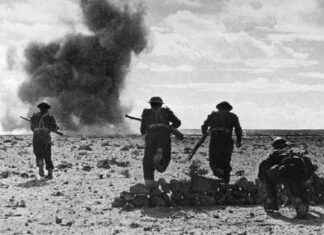A blunt, lysrörsbelyst portrait of a man in his fifties. The hair is divided into mittbena and he has a grey jacket with chest pockets. The glasses rests on the nose and the face is clean-shaven, but his bushy eyebrows creasing together in an almost childish expression of desperation. Maybe it’s remorse? Or pain? By the pixels behind small blurry tears.
the Man in the picture is my father, but I do not recognize him. The image that most people see in front of them when they hear his name, is a still image from a tv report from 2016, where he under torture, admit to crimes. As the organization Safeguard defenders dealt with in the report, ”Scripted and staged: Behind the scenes of China’s forced TV confessions” hear my father’s confession to a growing crowd of carefully directed the drama, which is used to make trials unnecessary.
Read more: Great call – ”Gui Minhai, must be released”
his debt” and should instead be judged by the viewers, despite the fact that no trial has been held. The latest act in the fiction of my father’s crime was a press conference where he performed live. Images from the South China Morning Post where he is sitting between two policemen, or distorts his face in a ghastly smile, is still used extensively by both Swedish and foreign media. Often thrown into, ryckta out of context, in articles where the name Gui Minhai mentioned. Very rarely do we get this made it clear that it is propaganda, it is all about. Instead, the adoption of these photos speak for themselves.
the Right to be considered innocent until proven guilty is one of the rule of law, the main principles. But in the media in search of sensationalism seems to have kompromissats away. Images from chinese tvångsbekännelser always played out more or less explicitly in any form of captivity: directors allows visual markers such as orange fångkläder, sterile backgrounds or police officers in the picture paint the environment institute. In turn, connotes the prison crime and proven guilty.
Photographs, works mainly in journalism as evidence: ”A picture says more than thousand words”, it said. But we must never for the sake of it assume that the images are politically neutral. Propaganda has a long history of producing images, in particular, to prove and confirm ideological beliefs. When the newspapers uncritically disseminate without context or explanation, they let hardly the picture speak for itself. The lack of journalistic stance to prepare a place for dictatorship history as the pictures so carefully arranged to tell the story. The result is a conscious or unconscious statement against democracy, against freedom of expression and against the rule of law.
Angela Gui: Human rights do not exist in a vacuum
to the image from January 2016, why has this still had such a large spread? Perhaps the reason that the tears and suffering evokes the empathy of the reader. But who helps the compassion? At least not the crying, when journalists are too lazy to problematize the image’s context, but still want to rake in the clicks, and emotional reactions. In the picture of the crime that surrounds, the tears change tears hardly viewers ‘ judgment; instead, it reduced it to klickbete.
We must not forget that the publication and dissemination of images always takes place in a political context. Journalists need to be better to apply source criticism, even visually. A picture may say more than a thousand words, but probably need it a few words that help to fulfill their journalistic purpose. Today it is 70 years ago the UN’s universal declaration of human rights was adopted. It is a great opportunity for all of us to think about some way to draw attention to violations of human rights actually maybe makes us complicit.







